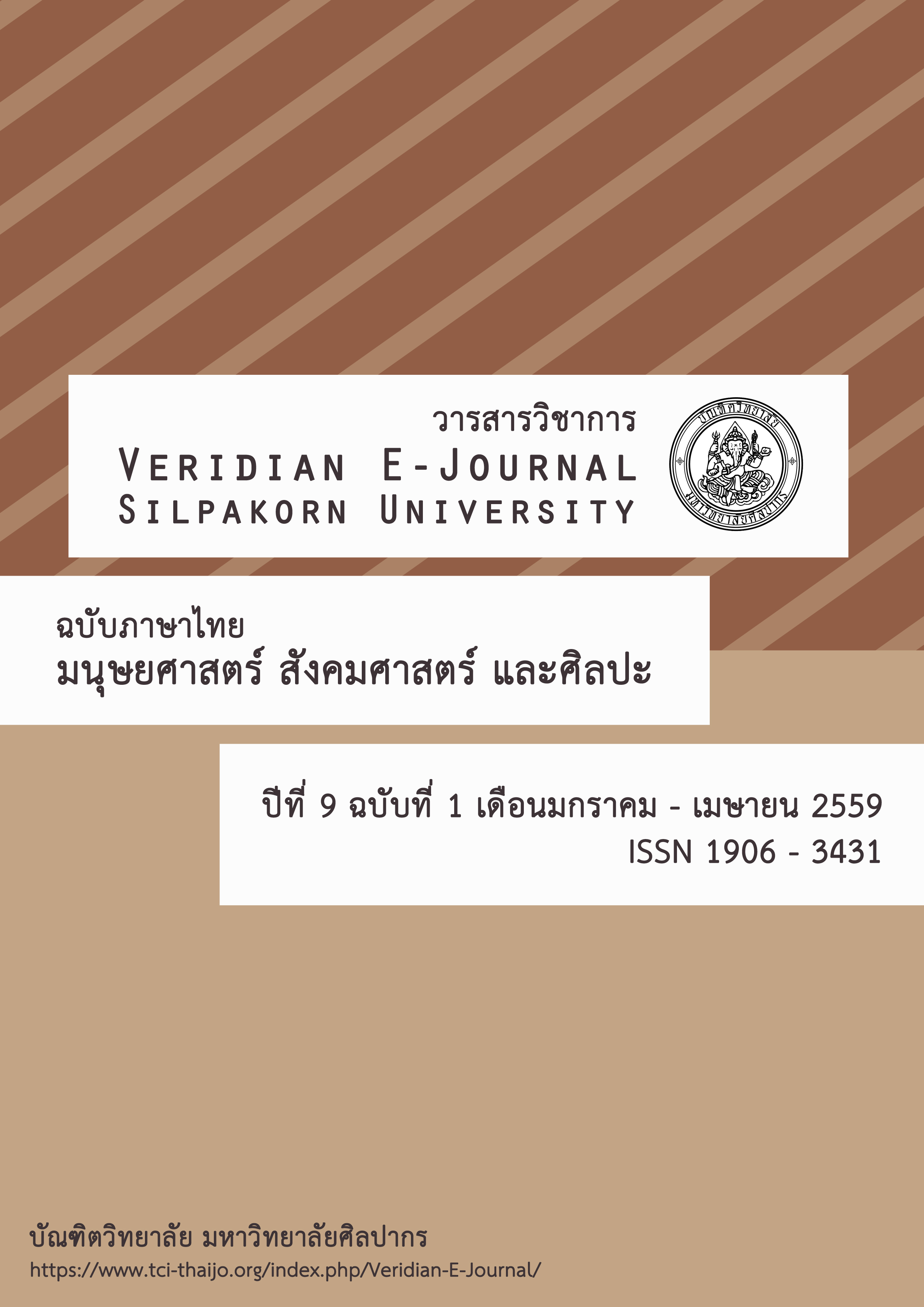โมเดลการวัดมูลค่าเพิ่มทางการศึกษาสาหรับวัดคุณภาพสถานศึกษาด้วยการใช้ผลรวม ของผลสัมฤทธิ์ทางการเรียนและผลการประเมินและรับรองคุณภาพของโรงเรียน
Main Article Content
บทคัดย่อ
บทคัดย่อ
การวิจัยนี้มีวัตถุประสงค์เพื่อ (1) พัฒนาวิธีการวัดมูลค่าเพิ่มทางการศึกษาเพื่อใช้ประเมินคุณภาพสถานศึกษาด้วยการวัดมูลค่าเพิ่มจากผลสัมฤทธิ์ทางการเรียนและผลการประเมินและรับรองคุณภาพของโรงเรียน (2) ศึกษาความสอดคล้องของผลการประเมินคุณภาพสถานศึกษาด้วยการวัดมูลค่าเพิ่มที่พัฒนาขึ้นซึ่งมีการกำหนดน้ำหนักของการรวมคะแนนแตกต่างกัน และ (3) เปรียบเทียบมูลค่าเพิ่มทางการศึกษาของสถานศึกษาที่มีบริบทต่างกัน
การวิจัยนี้ใช้ข้อมูลทุติยภูมิ กลุ่มตัวอย่างที่ใช้ในการวิจัย คือ โรงเรียนประถมศึกษาในสังกัดสำนักงานคณะกรรมการการศึกษาขั้นพื้นฐาน จำนวน 96 โรงเรียน และมีนักเรียนชั้นประถมศึกษาปีที่ 3 ปีการศึกษา 2557 จำนวน 7,988 คน ซึ่งได้จากการสุ่มแบบหลายขั้นตอน ตัวแปรที่ศึกษาประกอบด้วย ตัวแปรระดับนักเรียน ได้แก่ เพศ การศึกษาของผู้ปกครอง ความสัมพันธ์ในครอบครัว ผลการประเมินคุณภาพการศึกษาระดับชาติขั้นพื้นฐาน ตัวแปรระดับสถานศึกษา ได้แก่ ผลการประเมินและรับรองคุณภาพของโรงเรียน ที่ตั้ง และขนาดของสถานศึกษา เครื่องมือที่ใช้ คือ แบบบันทึกข้อมูลพื้นฐานของโรงเรียน ผลการประเมินคุณภาพการศึกษาระดับชาติขั้นพื้นฐาน และ ผลการประเมินคุณภาพสถานศึกษา รอบ 3 ผู้วิจัยวิเคราะห์ข้อมูลคะแนนคุณภาพการศึกษาที่เป็นผลรวมของคะแนนผลสัมฤทธิ์ทางการเรียนกับผลการประเมินและรับรองคุณภาพของโรงเรียนโดยมีการถ่วงน้ำหนักต่างกันสามโมเดล คือ 40:60, 50:50, และ 60:40 สถิติที่ใช้ในการวิเคราะห์ข้อมูล คือ การวิเคราะห์พหุระดับ
ผลการวิจัยสรุปได้ว่า (1) โมเดลการวัดมูลค่าเพิ่มทางการศึกษาที่มีความกลมกลืนกับข้อมูลมากที่สุด คือ โมเดลที่ 1 (40:60) รองลงมาคือโมเดลที่ 2 (50:50) และ โมเดลที่ 3 (60:40) (2) ความสอดคล้องของผลการประเมินคุณภาพสถานศึกษาด้วยการวัดมูลค่าเพิ่มระหว่างโมเดลที่ 1 (40:60) กับโมเดลที่ 2 (50:50) มีความสอดคล้องมากที่สุด มีความสอดคล้อง 91.67% รองลงมา ระหว่างโมเดลที่ 2 (50:50) กับโมเดลที่ 3 (60:40) มีความสอดคล้อง 88.54% และระหว่างโมเดลที่ 1 (40:60) กับโมเดลที่ 3 (60:40) มีความสอดคล้อง 80.21% ตามลำดับ และ(3) สถานศึกษาที่มีที่ตั้ง และขนาด ต่างกันมีคะแนนมูลค่าเพิ่มทางการศึกษาไม่แตกต่างกัน
Abstract
This research aimed to (1) develop educational value-added approach for evaluating the quality of schools by using student achievement in combination with school evaluation and accreditation data; (2) examine the congruence of school evaluation results among the developed educational value-added approaches with different weights assigned to total scores; and (3) compare the educational value-added measures of schools with different contexts.
This research used secondary data. The research sample comprised 7,988 primary school students of the 2014 academic year from 96 schools under the Office of the Basic Education Commission. The variables to be studied consisted of student level variables including sex, parental education, family relationship, Ordinary National Test (ONET) score, and school level variables including school quality assurance data, school location, and school size. The employed research tools were a form for recording background data of the school, a form for recording ONET scores of the school students, and a form for recording the third round quality assurance data of the school.The researcher analyzed educational quality scores of the school which were the summation of learning achievement score, results of school quality evaluation and results of school quality accreditation. Three models of weighting were employed, namely, the 40:60, the 50:50, and the 60:40 models. The statistical procedure employed for data analysis was the multi-level analysis.
The major findings were as follows: (1) the educational value added model 1 (40:60) had the greatest fit to the data, followed by Model 2 (50: 50) and Model 3 (60:40), respectively; (2) the congruency of school classification results based on the educational valued added measures between model 1 and model 2, between model 2 and model 3, and between model 1 and model 3 were 91.67%, 88.54%, and 80.21% respectively; (3) schools in different locations and of different sizes did not significantly differ in their educational value added scores.

